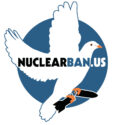“Signing” a treaty is simply making a commitment to follow through with ratification. “Ratifying” a treaty means that its terms become legally binding in the ratifying country. “Joining” a treaty may imply signing and/or ratifying, while “embracing” a treaty implies a form of support that falls short of signing or ratifying it.
When it comes to the Treaty on the Prohibition of Nuclear Weapons (TPNW, or “Nuclear Ban Treaty”), these distinctions are important. Signing the TPNW commits the United States to the goal of eliminating all nuclear weapons from all countries. It opens a pathway for extensive negotiations with other nuclear-armed nations (like Russia and China) before the treaty is ratified. Only after ratification do the terms of the treaty become legally binding on the United States.
On June 6, 2024, the Rhode Island House of Representatives became the sixth state legislative body to pass a Back from the Brink resolution, calling on the US government to negotiate the elimination of nuclear arsenals; take existing nuclear weapons off hair-trigger alert; cancel plans to develop a whole new generation of nuclear weapons; renounce the first use of nuclear weapons; and end the President’s sole authority to launch nuclear weapons.
Significantly, the Rhode Island resolution, like its counterpart that was passed two years ago in the Rhode Island Senate, goes further and calls for the US to “sign and ratify” the TPNW.
California, the first state to pass such a resolution in 2018, called on the US to “embrace” the TPNW. The New Jersey Assembly then called on the US to “ratify” (but for some reason, not to sign) the TPNW, while Oregon called on the US to “join” it. The Maine Senate resolution does not refer to the TPNW at all (except in a “whereas” clause).
The Back from the Brink campaign’s own model resolution, used by a majority of towns, cities and organizations thus far, calls on the US to “embrace” the TPNW, while the resolution currently in the US House of Representatives, H.Res.77, calls on the US not to embrace the Treaty itself, but only to embrace its “goals and provisions.”
Meanwhile, the Norton Bill (H.R.2775) is another nuclear weapons bill in the US House of Representatives. This bill calls on the President to “sign” the TPNW. It then calls on the Senate to ratify it “when it is clear that ratification will result in the dismantlement and elimination of all nuclear weapons in every country…”
This wording helpfully separates the two steps of signing and ratifying the treaty. It focuses on signing the TPNW because this is something the President of the United States can do, on his own, right now. And it makes ratification conditional on reciprocal steps being taken by the other nuclear-armed nations, so there can be no question of it being about the US undertaking “unilateral” disarmament.
Signing the TPNW, in fact, commits the US to no more than it is already committed to under the Non-Proliferation Treaty, signed and ratified more than 50 years ago. That was the commitment to negotiate the elimination of all nuclear weapons “in good faith” and “at an early date.”
The World Court further ruled in 1996 that this was a commitment not just to negotiate (indefinitely) but to “bring [such an agreement] to a conclusion.” Since then, the US has given its “unequivocal undertaking” to the rest of the world that it will fulfill this legal commitment to negotiate the elimination of all nuclear weapons (and yet has still not done so).
This commitment is not only a treaty obligation under international law. Article VI of the US Constitution states that international treaties are to be treated as the “supreme law of the land.” Thus it is a legally binding commitment under US law.
It’s time to stop letting our politicians off the hook by pretending they can get away with anything short of the total elimination of nuclear weapons, as our existing legal commitments demand.
There are many possible pathways to achieve this, but the most obvious one is to sign the TPNW, work to get the other eight nuclear nations on board, and then come up with “legally-binding, time bound plans for the verifiable and irreversible elimination” of all nuclear arsenals as required by Article 4 of the TPNW.
This of course necessitates the eventual ratification of the TPNW by the US Senate. But first, the US President must take the first, crucial step: signing the TPNW. That is probably the only step the US can take at this point to convince the rest of the world that the US is finally serious about fulfilling its NPT Article VI commitment to work for the elimination of all nuclear weapons.
Signing the TPNW would open the door to the other nuclear-armed nations to join the TPNW, and would actually put a great deal of pressure on them to do so. And if they don’t? The US is committed to nothing until the Senate ratifies. And if other treaties are anything to go by, there would be plenty of time for negotiations and waiting it out before the final step of ratification and the legal commitments that go with that.
So let’s stop beating around the bush and make our demand as straightforward and clearcut as possible: the US should sign the TPNW! Words do matter, and in this case, the stakes couldn’t be higher.








